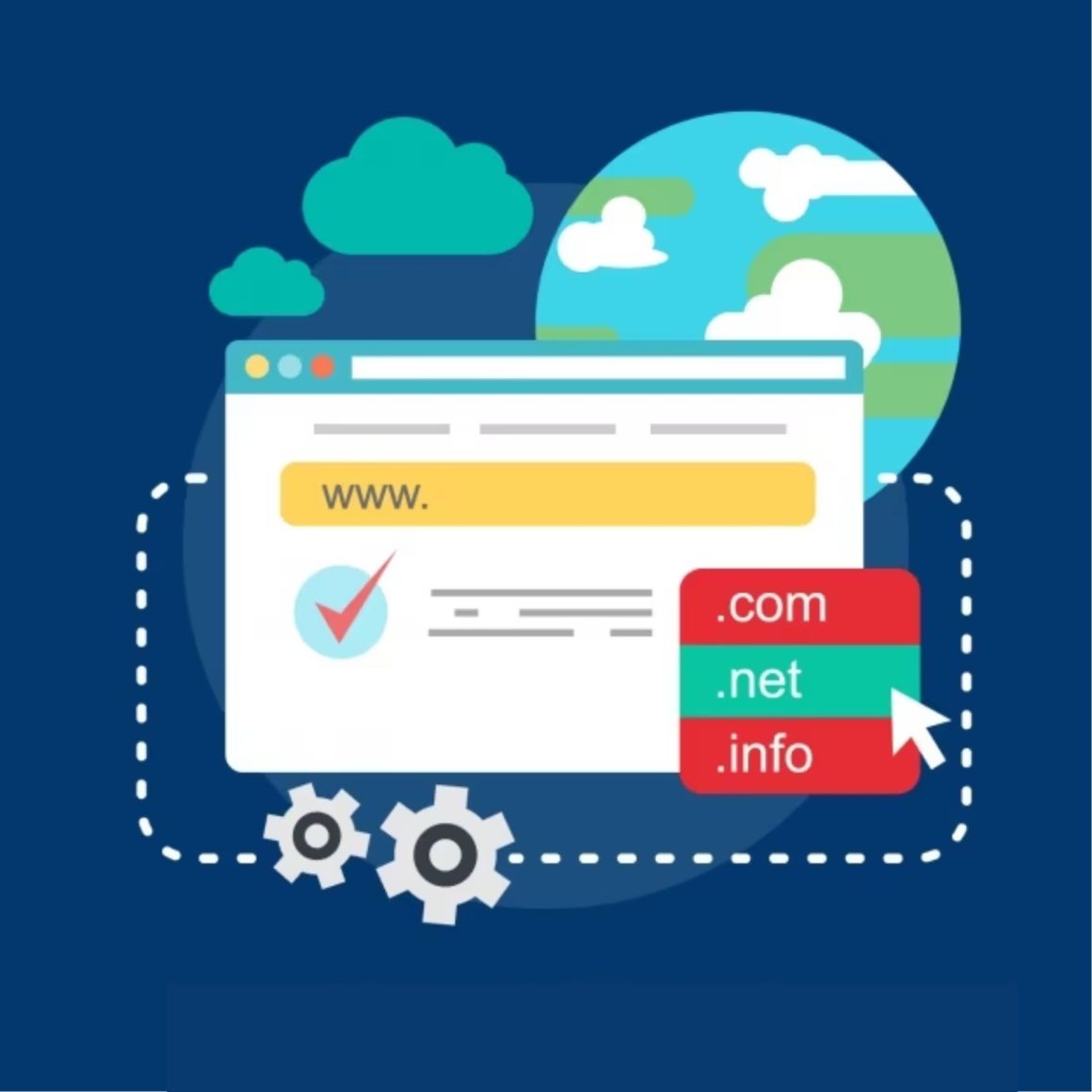
Website Design
Today’s digital marketplace demands cues for trustworthiness from businesses. Whether online or offline. With a glimpse at the websites of top brands, you can mark how strong their user base is and how loyal their customers are to these brands.
How will customers identify whether you are worthy of their trust or not?
More the reason you need to ensure a few things and do something extra for your visitors to gain their trust.
Below are some pointers that can help you make your website trustworthy and worth visiting often!

1. Optimize Your Domain
The first thing the visitors would notice is your domain name. It’s the unique identifier for your website. It must be easy to remember so people can access your site without confusion. Your domain name must not give a hard time to people. It should be easy to spell with an easy-to-remember address.
For this, keep in mind a few things:
Go for a custom domain name instead of a subdomain like abc.wordpress.com. Using a custom domain name like abc.com sounds more professional.
Try keeping your domain name short and quick to spell without using special characters.
Use a quality domain extension such as .com, .net, .io, etc. instead of using .info, .science, etc. which many sites consider inferior or spammy.
Choose the name relevant to your brand and the industry you serve. It helps people understand what your site is all about.
For example, if you want to create a fashion blog, you can use a domain with relevant keywords like “style” or “fashion” and their variants. You could also use your name to make it even more personalized.
Add HTTPS for Security
Using “HTTPS” in your domain name add trustworthiness. It’s crucial as it makes your site more secure. Visitors with this knowledge may decide not to visit your site if HTTPS is not enabled.
So, what is it exactly?
Let’s take the example of Fiviza. The site has the URL: www.fiviza.com, which is quick to recognize. But it also contains a critical component – HTTP:// preceding the URL. This is a hypertext transfer protocol with s or without it for security. Adding only www has become unimportant due to a lot of ambiguity in the internet world. But by adding ‘s’ to the HTTP, HTTPS has become a necessity due to increased security risks.
Your site has HTTP by default, so you need to make it HTTPS by installing an SSL certificate. It generates secure connectivity between a visitor’s browser and your web hosting server. So data exchange is safe, resulting in increased trust in the website as the visitors see a green padlock for your website’s address. Indicating to them the website is secure to visit.

2. Beautiful Yet Responsive Design
Why is good website design important?
Modern websites must be beautiful yet responsive to offer a great visitor experience.
It’s like your home. You beautify and decide the colors, and designs, placing elements at accessible locations in the house, etc.
It will add to your trustworthiness if you could spare some time designing your website. It’s where they first land when visiting your site.
For this, make sure to:
Choose an attractive and helpful design layout. Also, a theme that is flexible in experimenting with your design.
Use relevant graphic elements, quality images, and videos in-line with your website’s aim.
Design each page with a clear description and highlight CTAs that stand out, and provoke people to click them.
Make the website navigation smooth and easy. The visitors won’t have trouble moving from one page to another. Keeping the aesthetics that do not overwhelm them,
amaze your visitors. Add exquisite color combinations, logos, and easy-to-read text. Add other aesthetics for your site. Have a professional touch on your website.

3. Improve Your Content
You have designed your website, but what about the content that goes in?
When visitors come to your site, they seek some information. It can be articles and blogs that can solve their problems, products or services they like to buy, or anything else they came searching for.
Visitors will look for the information you have provided on your site. Which is why you need to up your content game. Quality content will entice your users to be on your site. Take the action you want them to, such as making a buy, reading articles, clicking on affiliates, etc.
Incorporate high-quality, result-driven content on your websites, such as your about us section, and home page copy. Add informative articles and blogs, product descriptions, and more. You can also create guides and ebooks for users to educate about your products or services or sell them if you want.
Make your site as informative as possible and help users solve common issues. Including an FAQ section and answering questions in a simple and easy-to-understand language. For this, you may hire a copywriter to write the content on your site in an engaging way and communicate your message to your audience.
Furthermore, ensure you don’t have spelling mistakes or inaccuracies in your content. If you maintain a blog, post informative articles, cite resources.Makes it authentic and research-based. Also, include relevant CTAs and pictures in your content to make it engaging, attract users, and persuade people to take the desired action.

4. Enhance Website SEO
Even if you have the best design, domain name, and content, how will people know you exist if your website can’t rank in the search engines?
This is why it’s essential to increase your site’s visibility so people can find you when searching for information, products, or services. And this is where SEO shines. Search Engine Optimization (SEO) includes certain practices that help increase your site’s rank on search engines like Google, Yahoo, etc.
People nowadays go online to search for information on these engines before making a buy or seeking guidance. More people will visit your site and learn about you if you rank well. And now, all the effort you have made can be paid off.
Search engines use three ways to decide site rankings – crawling, ranking, and indexing.
Search engine bots crawl the web and find sites via links from other sites. Hence, you must start link-building with other sites.
After the bots crawl and find your site. They index it against thousands of other sites based on the content, keywords, relevance, uniqueness, multimedia, and links. So, include fresh content with keywords and media to rank.
Finally, the search engines rank your site by determining the best result against the given search. Based on the authority and relevance of your content. So, include relevant content targeting your business or industry keywords your audience is searching for.
5. Include Testimonials

Testimonials do matter. They are proof that others have taken up your services, and products, or collaborated with you and that they were happy about it.
Fraudulent activities are everywhere, and nobody wants to be framed. By including testimonials, you prove that people can trust you with your information, products, or services.
It also helps boost their confidence in your brand or website because they can witness how happy others are by choosing you.
For testimonials, you can do a few things:
Ask your happy customers to provide testimonials you can publish on your site. Include their name, photo, and organizational capacity. As it makes, the testimonials more authentic.
Take user reviews and post success stories on your site. You can include case studies about how you helped someone with your products or services. It will produce more impact on the audience looking for similar help.
You can contact popular, credible media sites to feature your products or services. It will also increase your visibility in front of a broader user base, which can help in more website traffic and conversion.
6. Link Social Accounts

Almost everyone uses social media, whether they are customers or organizations. Popular social media websites like Facebook, Instagram, and LinkedIn are easy ways to reach out to more people. Connect with them, and grow your professional network.
Choose LinkedIn or other media websites that you are comfortable with and where your audience is. Create a professional account and stay active to network with your industry people and engage with your audience.
For example, when people find you on LinkedIn, they can check your website’s address and hop into your website for more details.
7. Make the Contact Process Easy
Now, you have got everything in place. Your web design is superb, content and SEO are excellent. Social links are added. Ads are placed well, and testimonials are there, but if you don’t provide the correct contact details, it will be trouble for visitors.
It won’t matter how much effort you have put in if the visitor can’t find the right way to contact you. They could go to other websites.
So, make it easy for people to contact you if they have a query or issue, or seek more information about your offerings.
You can add your email address, phone number, and chat option if you like on the home and contact pages. Design the contact page carefully, keeping it simple. Offer many contact channels so visitors can be comfortable choosing the best option.
Furthermore, include a quick contact form to help people reach out to you with their context. Make it simple. You can ask for their name, email address, or the concern they are having so you get an idea of what they actually seek.
Also, if you are a product or service provider, make sure to be available. It could be through live chat or phone call, at least during business hours, if not 24×7 (although 24×7 is best).
8. Be Transparent
Transparency is vital in the present-day business world attacked by fraudsters and opportunists. Whatever your policies are, how easy or stringent, you must communicate them clearly to your visitors. It will help them understand your work and prevent them from being in the dark.
Create a terms and conditions page highlighting all the policies you have for visitors. Mention that they agree to them before proceeding with your site.
Also, create a page for privacy policy so the visitors can understand how you use their data. It will keep your visitors’ trust in you and prevent risks related to compliance regulations and penalties.
9. Keep Your Site Up-to-date
All the above pointers would help you make your site trustworthy and helpful during construction. It will establish your visitors’ trust. And now you have one more responsibility – to maintain that trust.
And how do you do that?
You need to update your website. This means all the content on your site. Including the web copy, creating new articles and blogs, and updating the old articles. Updating your privacy policy, the terms and conditions if they change, and so on.
When you update your site, users can avail themselves of the latest information about your site. Also your products and services, articles, and how they should use it.
You can also inform the users via their email if you undergo major changes. As a result, your visitors will feel you are concerned about them and their experience, and hence, they can remain your loyal users.
Conclusion
User trust is crucial in the business world. Thousands of competing websites compete, including those that impersonate or are fraudsters. Visitors look for trust and something extra that can differentiate them from the rest. You can win their trust by following the above pointers. It’s the best bet to maintain user trust and maintain it in the long run.

